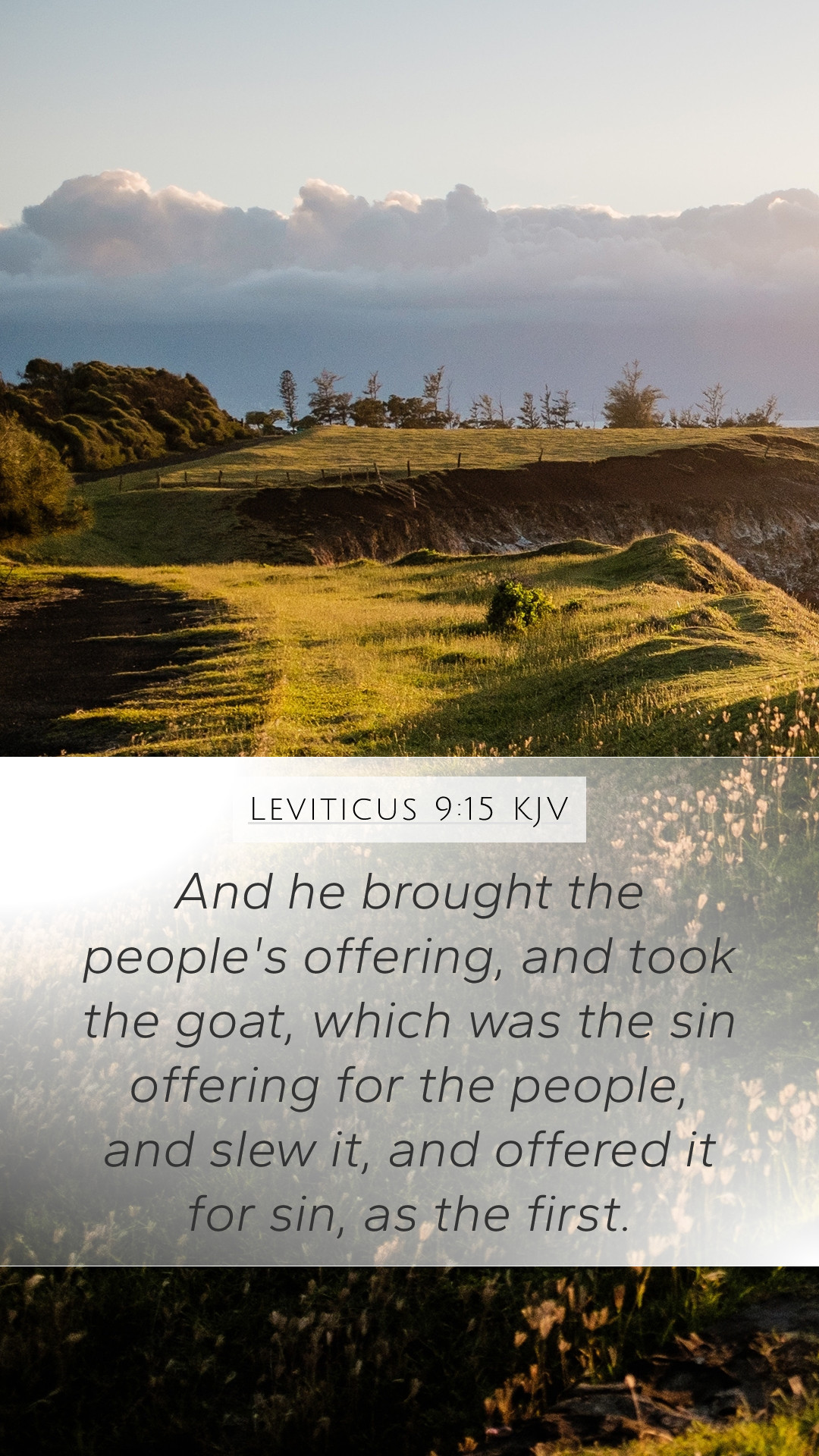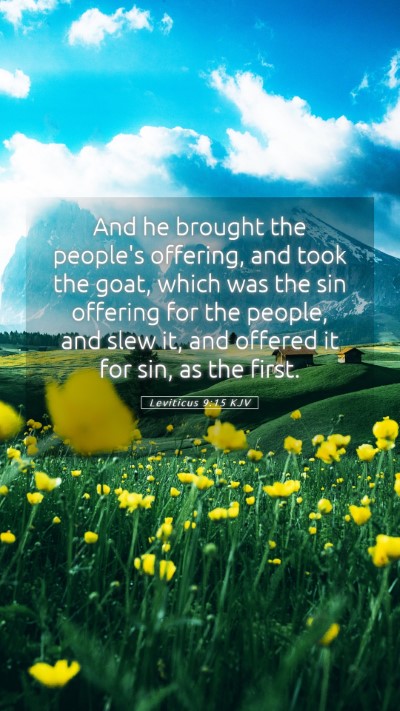Understanding Leviticus 9:15
Leviticus 9:15 states: “Then he brought the people’s offering and took the goat, which was for the sin offering for the people, and killed it and offered it for sin, like the first.” This verse presents significant insights into the sacrificial system of the Old Testament and its spiritual implications.
Overview of Biblical Context
The Book of Leviticus primarily serves as a guide to the Israelites on how to maintain holiness as they dwell in the presence of God. The context of Leviticus 9 is critical, as it describes the inaugural offerings of Aaron and his sons after they were consecrated as priests.
Verse Interpretation
In this verse, we see the role of the sin offering, which was vital in the process of atonement for the people's sins. Matthew Henry notes that sin offerings symbolize the seriousness of sin and the need for a sacrifice to restore fellowship with God. This is also echoed in the thoughts of Adam Clarke, who emphasizes the necessity of bloodshed in the atonement process and foreshadows Christ’s ultimate sacrifice.
Symbolism in the Sacrificial System
The goat here represents Jesus Christ, who is referred to as the Lamb of God (John 1:29). Albert Barnes articulates that this offering was essential in recognizing the need for a mediator between God and the people. In doing so, it serves as an early foreshadowing of the New Covenant, which would ultimately be fulfilled in Christ.
Insights from Commentaries
-
Matthew Henry's Commentary:
Henry asserts that the sin offering was a demonstration of God’s mercy and justice, providing a means for the people to acknowledge their sins and find forgiveness.
-
Albert Barnes' Notes:
Barnes remarks on the procedural aspect of this offering and how it was pivotal to the sanctification process, highlighting its necessity in maintaining a right relationship with God.
-
Adam Clarke's Commentary:
Clarke discusses the importance of the collective offering, reflecting the community's need for atonement and unifying them in their worship and devotion to God.
Application of the Verse
Understanding Leviticus 9:15 today can enhance our introspection regarding sin and redemption. As believers, we are called to recognize the weight of our sins while simultaneously embracing the grace offered through Christ. This passage invites us to engage in deeper Bible study and apply the lessons learned to our daily lives (How to interpret Bible verses).
Spiritual Takeaways
- Recognizing the need for atonement and the seriousness of sin.
- Understanding the prophetic symbolism of Old Testament sacrifices as they relate to Christ.
- Encouragement towards communal worship and collective acknowledgment of sin.
Cross References
Various scriptures can further illuminate the significance of Leviticus 9:15. Notable cross-references include:
- Hebrews 9:22: “And without shedding of blood, there is no remission.”
- Exodus 29:14: Discusses the sin offering in the context of priestly consecration.
- 1 Peter 1:19: Referring to Christ as the Lamb without blemish or spot.
Conclusion
Leviticus 9:15 serves as a profound reminder of both the Old Testament sacrificial system and the New Testament fulfillment in Jesus Christ. Understanding this verse encourages believers to delve deeper into Scripture, paving the way for rich theological insights and practical applications in their faith journey.


